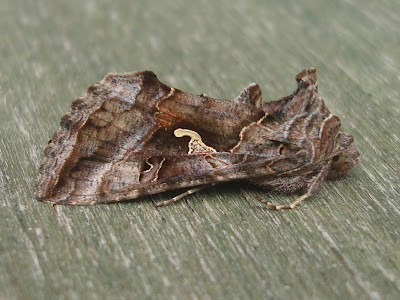
It got quite dull for my short evening walk along the Reeveshall seawall on Friday 9th. At least the tide was out so there was the usual scattering of waders along the Pyefleet Channel, pictured above.
The main bird of note was a young hobby that flew over a nearby field and perched on a fencepost for five minutes, preening its feathers every so often. A flock of 50 swallows with one or two sand martins mixed in passed over the seawall. Two whinchats and wheatear were noted on some of the fences, while 4 yellow wagtails were heard calling.
On the Reeveshall pool only 2 green sandpipers, 3 teal, 2 mallard and a little grebe were present.
A marsh harrier was seen on Langenhoe about to drop into the roost near the Point. Along the Pyefleet 100 black-tailed godwits, 10 avocets and 25 knot were the main waders of note while 5 little terns were flying round the entrance to the Pyefleet.
Andy Field visited Reeveshall on Friday and saw 4 curlew sandpipers, 220 knot in the Pyefleet, also 3 hobbies overhead and 17 yellow wagtails all perched on a fence with green sandpiper and greenshank on the pool.
Earlier in the day another sign that autumn passage is underway was the sight of 40 siskins split in two flocks flying west over the Golfhouse in the morning. One bird had passed over the park calling earlier in the morning. Four wheatears were still on the first beach near the park and 5 yellow wagtails were flying around the grazing fields. A sparrowhawk flew low over the fields, where the pools held 100+ teal, 2 wigeon, 3 shoveler, 66 curlew, 10 black-tailed godwits.
Offshore a Sandwich tern flew west along the shore at high tide as did 8 little terns and 10 common terns, while 2 eider were on the sea.
Enjoying the warmth and brief sunshine was one adder, as well as red admiral, peacock, large white, small white and several migrant hawkers.

This gate just inside the park entrance has become known as the "flycatcher gate" as it's often been the best place to see spotted flycatchers in the autumn in recent years. Keeping to its reputation, a spotted flycatcher was seen yesterday morning as it flew along the lower hedge and landed in a nearby dead tree, providing a nice but brief view from the gate. Hopefully more will stop off here over the next fortnight or so.
Warbler activity along the hedges has been quieter than some recent days with the most noticeable being about 5 blackcaps.
A cursory glance eastwards from the car park in the evening provided an unexpected distant view of an osprey which was seen circling slowly over the mouth of the Colne estuary. It drifted slowly over the Point and gained height as it headed back up river. This maybe the bird that has been seen in the Fingringhoe part of the estuary for the last week or so.
Earlier in the morning a good count of at least 9 wheatears were seen dotted along the beach from the park to the Point. A sign of autumn passage was provided by small flocks of meadow pipits totalling 48 birds crossing the river and flying west over the park.
On Wednesday the tanned adder was basking at its usual spot by the track in the morning and a wheatear on the seawall. A hobby flew low over the car park on Tuesday morning and a turtle dove was seen in Bromans Lane.
Two curlew sandpipers were seen in the Pyefleet on Monday 5th by Martin Cock and then 3 birds noted along with 20 knot by Steve Entwistle the following day.
A muntjac deer was reported being seen near the Golfhouse earlier in the week.

There were two of these silver-Y moths in the moth trap when it was checked on Thursday morning. They've been scarce this summer except for the last two weeks when one or two individuals around the Island have been seen during the day nectaring at various flowers.

The first L-album wainscot of the autumn was found, pictured above. This once scarce Essex moth seems to have become well established in recent years. Last autumn individuals were noted from mid September till mid October, peaking with 20 individuals in early October.
 One of the typical autumnal moths at the moment is the square spot rustic, pictured above. This should be one of the commonest moths in the trap over the next month or so.
One of the typical autumnal moths at the moment is the square spot rustic, pictured above. This should be one of the commonest moths in the trap over the next month or so.Other moths noted were hedge rustic, latticed heath, rosy rustic, flounced rustic, lesser yellow underwing, large yellow underwing, uncertain, snout, frosted orange, cloaked minor and setaceous hebrew character.

No comments:
Post a Comment